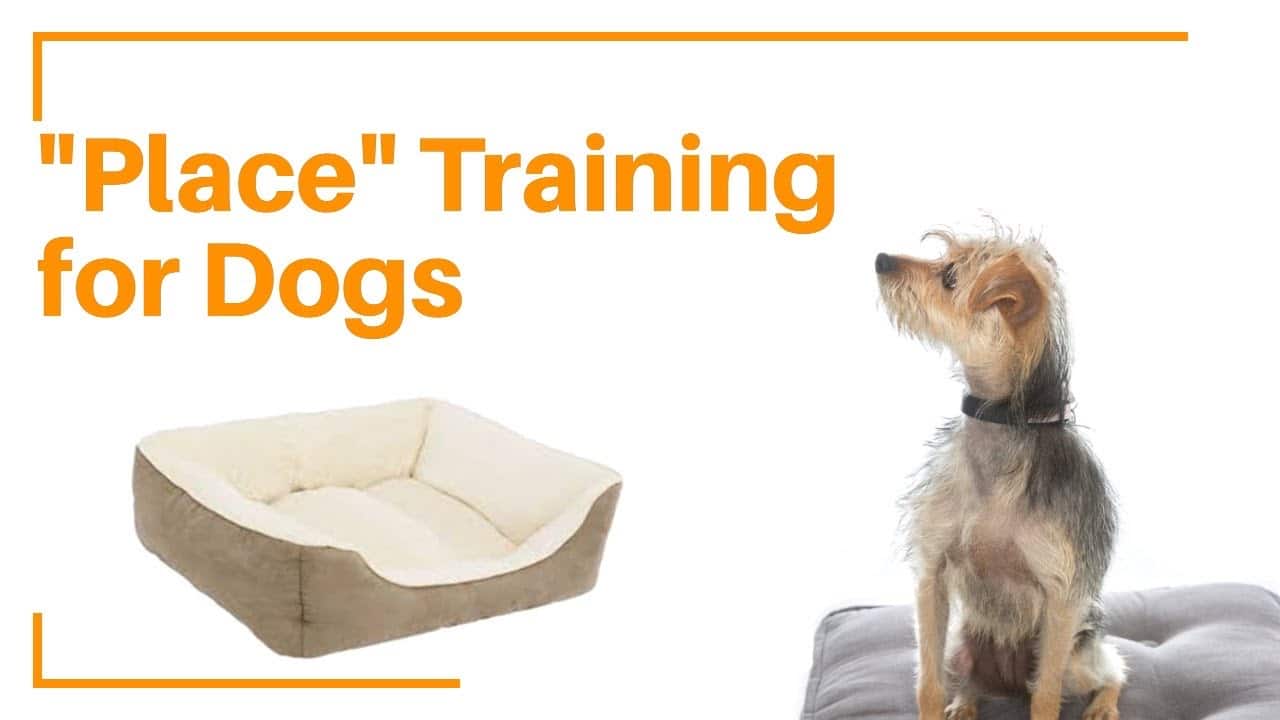Counter-conditioning, Desensitization, Managing Behaviors, Place Training
Place Training for Dogs
“PLACE” TRAINING FOR DOGS:
How do you teach your dog to go to its “place” or “Spot”?
By Will Bangura, M.S., CBCC-KA, CPDT-KA, FFCP, (Dog Behaviorist), Certified Dog Behavior Consultant
“Place” training for dogs is used in dog training to teach a dog to go to a specific location or piece of furniture, such as a mat or dog bed, and stay there until released. Teaching a dog the “place” command is important because it provides a designated spot for the dog to go to when it needs to relax or when its owner needs it to be out of the way. It can also be very helpful for dogs with fears, anxiety, aggression, or reactivity.
Some practical uses of place training for dogs
include:
- Teaching the dog to go to their designated spot when guests come over to prevent them from jumping or barking at visitors.
- Teaching the dog to go to their designated spot when their owner is eating to prevent them from begging for food.
- Teaching the dog to go to their designated spot when their owner is working from home to prevent them from distracting or interrupting their work.
- Teaching the dog to go to their designated spot when their owner is cooking to prevent them from getting underfoot in the kitchen.
- Teaching the dog to go to their designated spot when their owner wants them to relax or sleep provides them with a comfortable and safe place to rest.
- Teaching the dog to go to their designated spot when they are feeling anxious or stressed provides them with a safe and calming environment.
Place training for dogs can be used in various ways to help dogs with fears, aggression, and phobias. Here are a few examples:
- Teaching a dog to go to their designated spot when they are feeling anxious or stressed, such as during thunderstorms or fireworks, can provide them with a safe and calming environment.
- Teaching a dog with a fear of strangers to go to its designated spot when visitors come over can help to keep the dog calm and prevent them from becoming aggressive or defensive.
- Teaching a dog with a fear of loud noises to go to its designated spot when it hears loud noises can help reduce its stress and anxiety.
- Teaching a dog with a fear of certain objects or situations to go to their designated spot when they encounter them can help reduce their stress and anxiety.
- Teaching a dog with aggression towards other dogs to go to their designated spot when they encounter other dogs can help to keep the dog calm and prevent them from becoming aggressive or defensive.
- Teaching a dog with a phobia of certain objects or situations to go to their designated spot when encountering them can help reduce their stress and anxiety.
It is important to note that the “place” training for dogs should be combined with behavior modification techniques, such as desensitization and counterconditioning, to help dogs overcome their fears, aggression, and phobias.
Steps of place training for dogs:
- Choose a designated “place” for the dog to go to, such as a mat or bed. Place the mat in a location where the dog will be able to see it easily and where you will be able to access it easily for training.
- Begin by luring the dog to the mat using a treat or toy. Once the dog is on the mat, say “place” and give the dog the treat or toy as a reward. Repeat this step several times until the dog consistently goes to the mat when you say “place” and lures it with a treat or toy.
- Once the dog consistently goes to the mat, when you say “place” and lure it with a treat or toy, begin to fade the use of the treat or toy. Instead of luring the dog to the mat with a treat or toy, give the “place” command or cue and point to the mat. When the dog goes to the mat, give a treat or toy as a reward.
- Practice the “place” command or cue in different locations and with different distractions. Start with low-level distractions and gradually increase the level of distraction. This will help the dog to learn that the “place” command means to go to the mat no matter where they are or what is happening around them.
- Once your dog consistently goes to the mat on cue or command and stays there for a few seconds, you can start adding a duration to the command. You can say “place, stay” and gradually increase the amount of time you expect your dog to stay on the mat before releasing them with “OK” or “free.”
- Practice, practice, practice! Consistency is key when training a dog. Keep training sessions short and fun, and always end on a positive note. Your dog will learn to go to their designated “place” on command with patience and persistence.
Teaching your dog to stay in place
Training a dog a “stay” in the “place” involves teaching the dog to stay in its designated spot without being physically restrained, such as holding them or using a leash. Here is a step-by-step process on how to train a dog an implied stay on the “place” command:
Step 1: Teach the dog the basic “place” command or cue. This can be done by leading the dog to its designated spot, such as a mat or dog bed, and saying “place.” Reward the dog with treats and praise when they go to their designated spot.
Step 2: Once the dog understands the basic “place” cue/command, begin to add distance and duration to the command. Start by standing a few feet away from the dog and saying “place.” Reward the dog with treats and praise when they stay in its designated spot. Gradually increase the distance and duration over time until the dog can stay in their designated spot for several minutes while you move around the room.
Step 3: Next, begin to add distractions to the command. Start with simple distractions, such as toys or food, and gradually increase the difficulty of the distractions over time. Reward the dog with treats and praise when they stay in their designated spot despite the distractions.
Step 4: Next, begin to use the “stay” command in combination with the “place” command. Start by saying “place” and then “stay,” and reward the dog with treats and praise when they stay in their designated spot. Gradually increase the duration of the “stay” command over time until the dog can stay in their designated spot for several minutes while you move around the room.
Step 5: Once the dog can stay in their designated spot for several minutes with distractions and the “stay” command, begin to fade out the use of the command “stay” and enforce it. Also, begin to fade out the use of treats and praise. Start by using treats and praise less frequently, and gradually decrease their use until the dog can stay in their designated spot without the need for treats or praise.
It’s important to note that training a “stay” on “place” command may take time and patience. It’s also important to start with shorter training sessions, gradually increase the time, and be consistent with the commands. Additionally, it’s important to work with a professional dog trainer or dog behaviorist if the dog has any specific fears, aggression, or phobias that might affect the training process.
References
- Books:
- “Don’t Shoot the Dog!: The New Art of Teaching and Training” by Karen Pryor
- “The Power of Positive Dog Training” by Pat Miller
- “How to Train a Dog the Right Way” by Marlen Anderson
- Websites:
- American Kennel Club (AKC): https://www.akc.org/expert-advice/training/teach-dog-go-to-place/
- The Spruce Pets: https://www.thesprucepets.com/teaching-go-to-place-command-1118061
- Positively: https://www.positively.com/dog-training/basic-dog-training/teach-dog-go-to-place-command/
- Dog Training Me: https://dogtrainingme.com/go-to-place/


